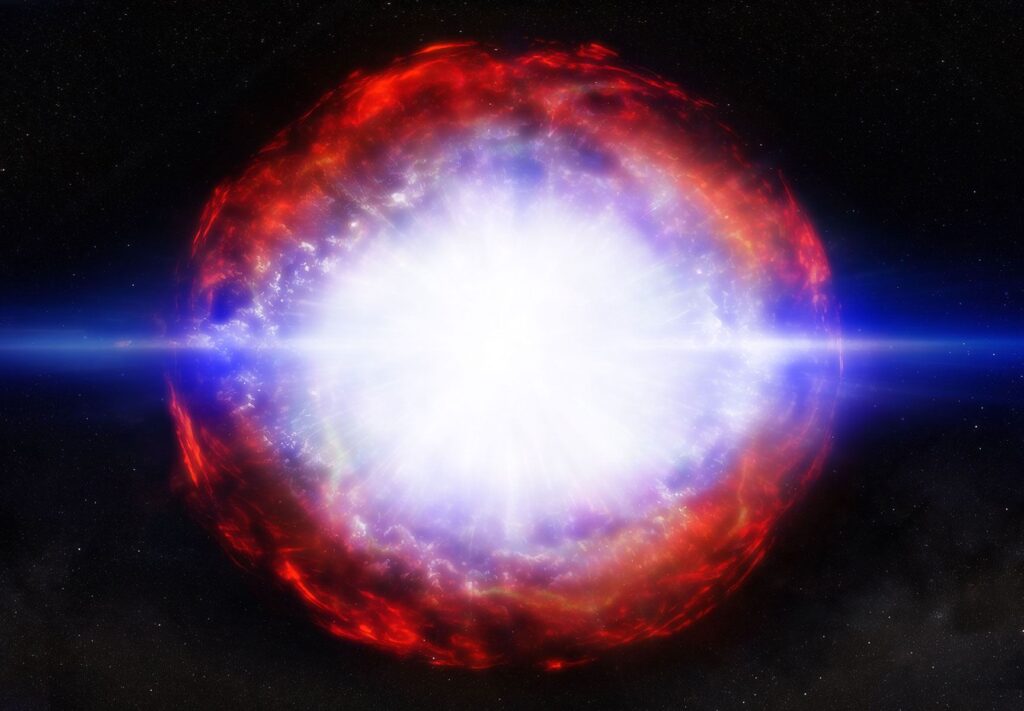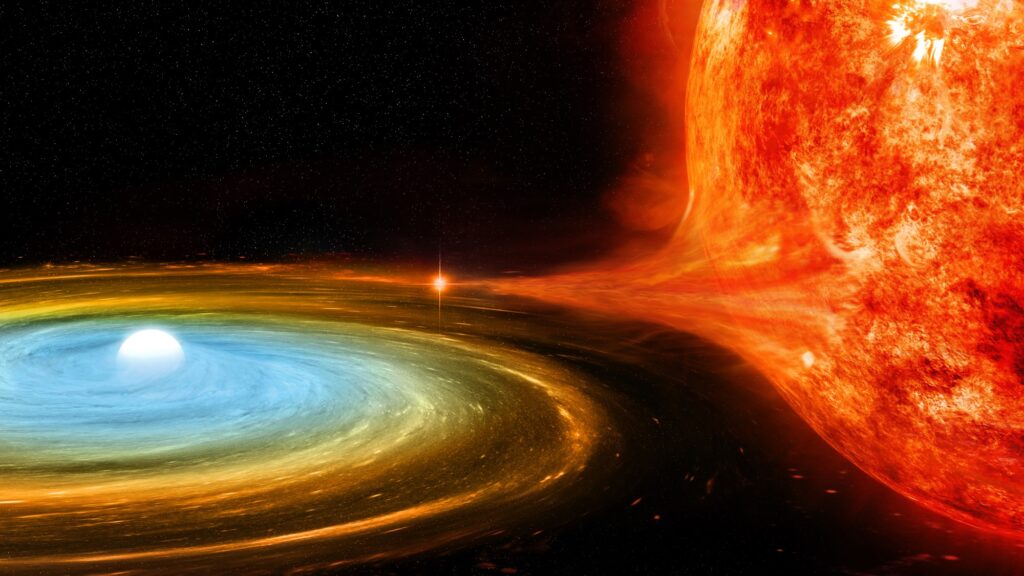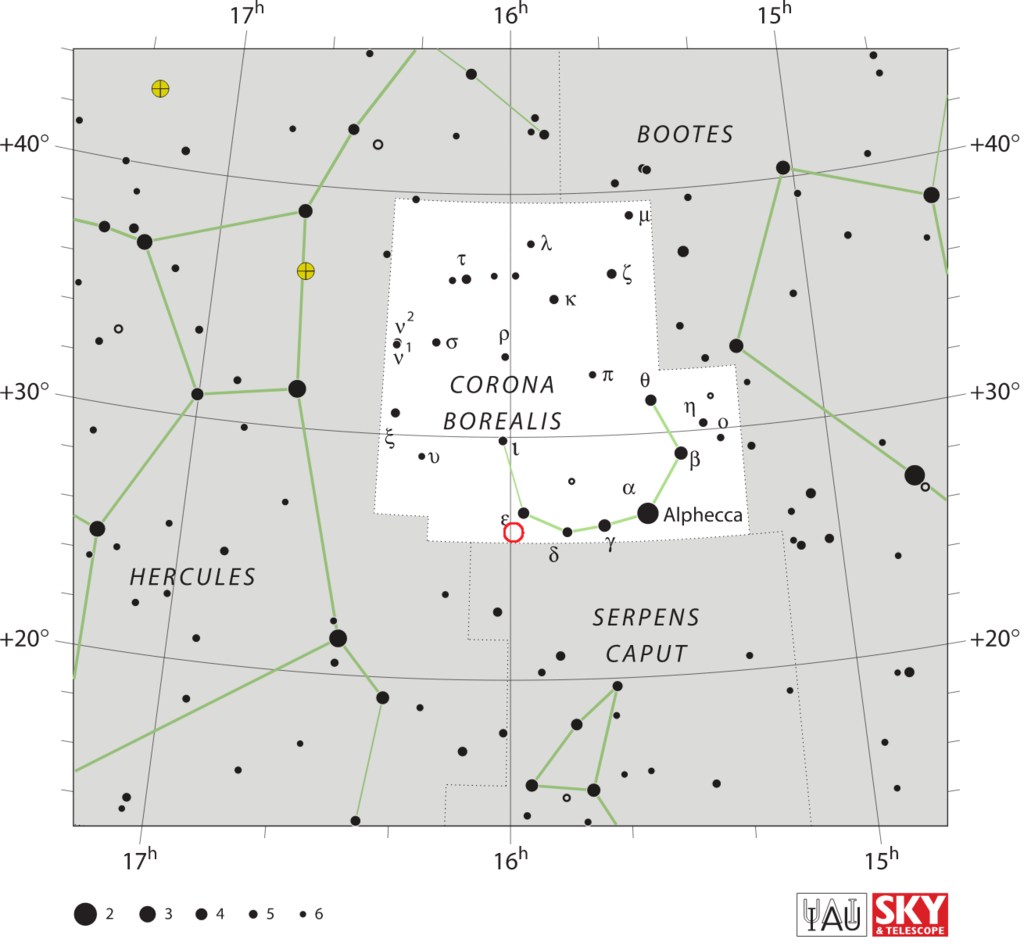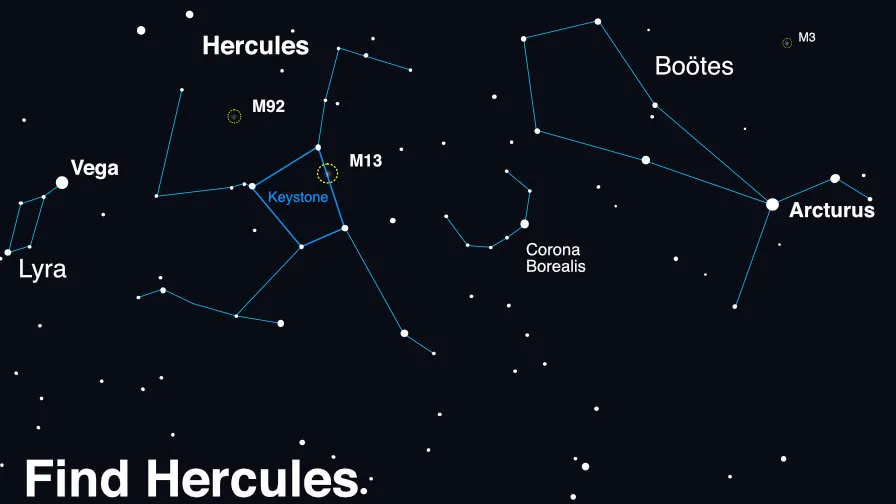For several months now, astronomers around the world have been regularly aiming their telescopes at a seemingly unremarkable star that can’t even be seen in the sky with the naked eye. This is about T Coronae Borealis. If the scientists’ predictions are correct, it will very soon present us with a very rare sight that can actually be seen once in a lifetime. T Coronae Borealis will flare up and its luminosity will increase many times. For some time it may even match Polaris in brightness.

But what is the mechanism of such flares? And why do astronomers believe that it will happen very soon? About all this in our material.
How new stars are formed
The event that astronomers have been waiting for is called a nova. It should not be confused with a supernova flare. Although they are visually similar for observers on Earth (a new bright star appears in the night sky for a while and then disappears), they are quite different phenomena.

A supernova flare occurs as a result of stellar death, such as the explosion of a white dwarf or the collapse of a supermassive luminary. It is a one-time event accompanied by the release of a huge amount of energy.
The flare of a new star has a completely different mechanism. It occurs in close binary systems, one of the components of which has already turned into a white dwarf, and the other is at the stage of a red giant and has significantly increased in size. In this case, the white dwarf may start stealing its companion’s matter. At some point, it accumulates such a large amount of hydrogen on the surface that it has an explosion-like acceleration of fusion reactions. This process is accompanied by a sharp increase in the luminosity of the system, because of which it temporarily becomes visible in the Earth’s sky.

The key difference between a nova and a supernova is that a nova flare is accompanied by the release of much less energy and does not destroy the stars involved. So after it, the white dwarf starts the next cycle of accretion of matter, and then the whole process is repeated again.
Past outbreaks of T Coronae Borealis
A unique feature of T Coronae Borealis, due to which it has attracted the attention of astronomers, is that the interval between its flares is only 80 years, while for classical novae it is measured in millennia. This gives astronomers the opportunity to prepare for it in advance and observe the whole process in real time.

It is quite possible that the flare of T Coronae Borealis was first observed in 1217 by the abbot of Ursberg Abbey in southern Germany. He described the appearance of a new star that shone for many days and then went out. The flare occurred exactly in the part of the sky where the constellation Coronae Borealis was.
The first T Coronae Borealis flare documented by astronomers occurred in May 1866. The brightness of the star increased from +10th to +2nd stellar magnitude, which is comparable to the brilliance of Polaris. The next time T Coronae Borealis flared was in February 1946. At that time its luminosity reached +3 star magnitude.
Next time T Coronae Borealis flares
Many people probably have the following question. If T Coronae Borealis flares once every 80 years, and the last time it happened was in 1946, why is it expected in 2024 and not 2026?

It should be realized that new flares do not occur on a strictly defined schedule and the intervals between them can vary. Astronomers have a number of indirect signs indicating that the T Coronae Borealis flare is very close. The fluctuations in its brightness over the past decade are strikingly similar to the behavior during a similar time period preceding the 1946 flare. If the trend continues, a new one should shine in Earth’s sky by September 2024.
Of course, this is not an absolutely accurate prediction. Everything depends on the intensity of matter absorption by the white dwarf, which can vary depending on various factors. Perhaps T Coronae Borealis will flare in 2025 or even 2026 after all. But in any case, this does not make the upcoming star fireworks less interesting, and its anticipation — exciting.
How to find T Coronae Borealis in the sky
The constellation Coronae Borealis is visible throughout the territory of Ukraine. The best period for its observation is June.

To find Coronae Borealis in the sky, you need to draw a mental straight line between the stars Arcturus and Vega. Following it with a glance you can see an asterism in the form of a horseshoe-shaped group of stars. This is the constellation Coronae Borealis. Coronae Borealis is located at the left edge of the horseshoe.

Those who are not very familiar with the night sky will find it easiest to download some kind of mobile app on their smartphone that shows constellation patterns. This could be Stellarium, Sky Map, SkySafari, or any of the other planetarium programs. With their help, even a beginner will find it fairly easy to orient themselves about where the constellation is located.
If the T Coronae Borealis flare is as bright as it has been in past times, the nova could be seen in the sky even in city light conditions. We can only hope that we won’t have to wait long, and it will erupt very soon.


